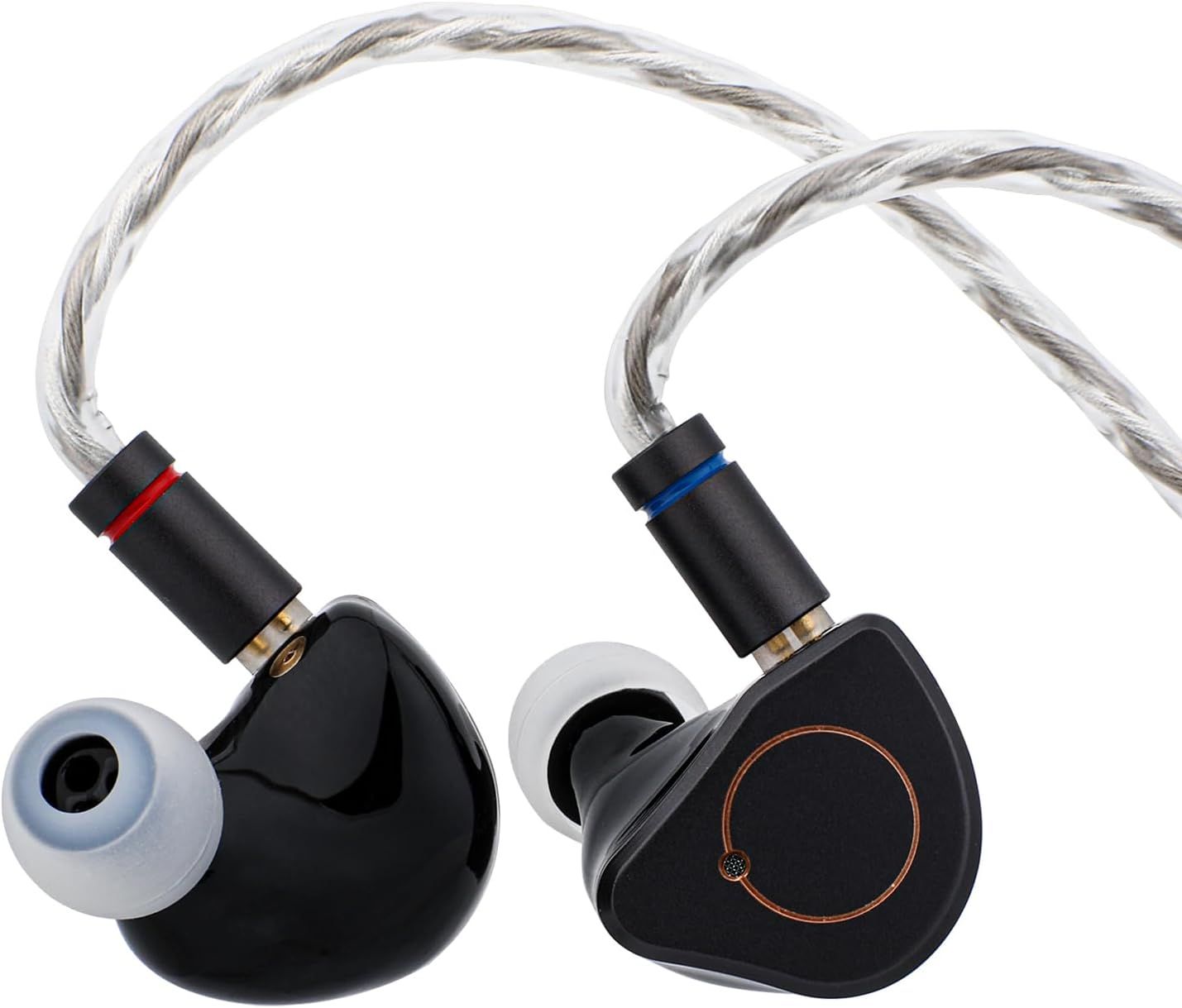Project Metavs.SuperMix 4
Sound & Specs Comparison
Information
Both IEMs are widely regarded in the audiophile community. See how they differ in terms of sub-bass response, upper mids, clarity, and overall tonality. Spider charts and rating breakdowns included.
Objective Comparison
Facts, details, stuff.
| General Info | Project Meta | SuperMix 4 |
|---|---|---|
| Brand | CrinEar | Simgot |
| Country | – | Korea |
| IEM Description | A debut IEM by Crinacle's CrinEar: a compact, full-aluminum flagship tuned to a “tilted Diffuse Field + bass boost” curve. Delivers vibrant mids, warm sub-bass, and clear treble—crafted for musical accuracy and comfort. | – |
| Price Level | 100 – 500 | 100 – 500 |
| Housing & Driver | ||
|---|---|---|
| Driver Config | – | Quadbrid |
| Driver Types | – | Piezo + Dynamic Driver + Balanced Armature + Planar Magnetic Driver |
| Shell Material | – | – |
| Cable | – | – |
| Technical | ||
|---|---|---|
| Freq Range | – | up to 40khz |
| Impedance (Ω) | – | 7.2 |
| Sensitivity (dB) | – | 120 |
| Crossover | – | – |
| Platform Info | ||
|---|---|---|
| Comments | 0 | 0 |
| Visit Count | 96 | 62 |
| External Reviews | 1 | 1 |
Meta Ratings
Sound-wise, Project Meta provides a evidently more refined presentation, with improved detail retrieval, microdynamics, and instrument layering when compared to SuperMix 4 (7 vs 6). For comfort fit, SuperMix 4 performs significantly better (8 vs 6.5). Even under close inspection, It maintains a softly cleaner, more seamless design — whereas Project Meta occasionally reveals minor imperfections. Cable-wise, Project Meta is evidently better built, featuring sturdier connectors and less tangling — traits where SuperMix 4 falls slightly short. It's accessories are notably better curated, reflecting greater attention to usability, presentation, and value-added content compared to SuperMix 4.
| Project Meta | SuperMix 4 | |
|---|---|---|
| Sound | 7.0 | 6.0 |
| Comfort Fit | 6.5 | 8.0 |
| Build Quality | 6.5 | 7.0 |
| Stock Cable | 6.5 | 5.5 |
| Accessories | 6.0 | 3.5 |
Sound Characteristics
Project Meta enhances basslines with a more energy and grip, giving them a livelier feel compared to SuperMix 4 (6 vs 5.5). It translates bass vibrations into a a more visceral experience, while SuperMix 4 lacks this tactile feedback (6.5 vs 5.5). It achieves a better warmth and coherence in the lower mids, bringing more realism to guitars and cellos (6.5 vs 4.5). In the upper mids, SuperMix 4 sounds n clearer and more articulate, highlighting vocals and lead instruments better than Project Meta (6.5 vs 5.5). Project Meta offers a greater shimmer and nuance in the lower treble, revealing micro-details that SuperMix 4 misses (7.5 vs 7). The upper treble of SuperMix 4 extends a further, offering more sparkle and openness than Project Meta (7 vs 6.5). Listeners may notice that It presents sounds with d more lateral space, giving recordings more openness than Project Meta (8 vs 6). The retrieval of faint audio cues on It is n more convincing, while Project Meta tends to gloss over them (7 vs 6). In complex arrangements, Project Meta separates layers b more distinctly, preventing overlap that SuperMix 4 occasionally suffers (6.5 vs 6). The note presentation is a fuller and more tactile on It, giving instruments a stronger physical presence than SuperMix 4 (6 vs 4.5). Percussion and quick attacks feel s more physical and punchy on It, adding excitement over SuperMix 4 (6 vs 5.5). The upper range of vocals is s cleaner and more forgiving on SuperMix 4, helping it avoid sibilant harshness that Project Meta shows (8.5 vs 6.5). Project Meta renders texture a more precisely, making instrument surfaces and vocal grain more palpable than SuperMix 4 (5.5 vs 5).
| Project Meta | SuperMix 4 | |
|---|---|---|
| Sub Bass | 6.0 | 6.0 |
| Bass | 6.0 | 5.5 |
| Bass Feel | 6.5 | 5.5 |
| Lower Mids | 6.5 | 4.5 |
| Upper Mids | 5.5 | 6.5 |
| Lower Treble | 7.5 | 7.0 |
| Upper Treble | 6.5 | 7.0 |
| Sound Stage Width | 6.0 | 8.0 |
| Detail | 6.0 | 7.0 |
| Layering | 6.5 | 6.0 |
| Masking | 5.5 | 5.5 |
| Note Weight | 6.0 | 4.5 |
| Slam | 6.0 | 5.5 |
| Sibilance | 6.5 | 8.5 |
| Timbre Color | 6.0 | 6.0 |
| Tonality | 6.0 | 6.0 |
| Texture | 5.5 | 5.0 |
Tonal Signature
// Nothing to compare yet.

